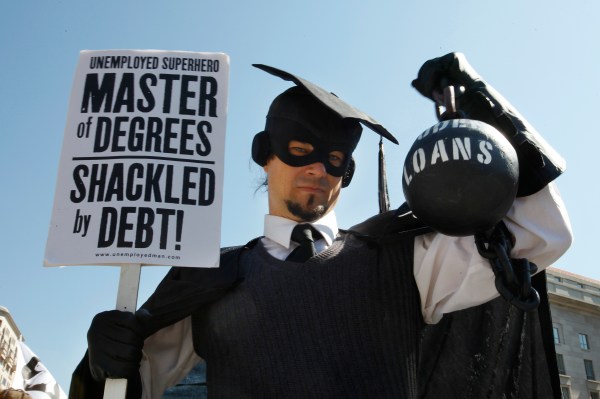As college debt skyrockets to over $35,000 per student, the state of Oregon has proposed a novel investment approach to loans: free tuition at public universities in exchange for 3 percent of earnings for the first 25 years after graduation. Just like a venture-capital portfolio that earns its profit from a few star investments, many students would end up underpaying the cost of their college, subsidized by the school’s star businessmen.
For example, students who earned a meager $600,000 over a quarter century would pay just $18,000 for their degree, while a multi millionaire would theoretically pay enough to subsidize all the artists, public servants, and most of the humanities. Assuming the Higher Education Coordinating Commission’s pilot goes according to plan, Oregon will roll out a polished version of the so-called “Pay It Forward” student loan program statewide.
Critics of higher education, especially venture capitalist Peter Thiel, have long argued that college simply isn’t worth the price tag:
“Probably the only candidate left for a bubble — at least in the developed world (maybe emerging markets are a bubble) — is education. It’s basically extremely overpriced. People are not getting their money’s worth, objectively, when you do the math.”
To prove his point, he opened the deliciously controversial Thiel Fellowship, which pays a cohort of 20 entrepreneurial youngins $100,000 to opt-out of college for at least 2 years and invest the money. The implication is that students are better off investing their time and money directly into a product, rather than delaying it for a double major in Beer Pong and 18th-century literature.
But as Stanford’s Dean of Engineering, Jim Plummer, argues, the problem with Thiel’s market-only approach is that most investments will fail, leaving students without marketable skills or a network of support. Perhaps more importantly, the general education requirements of college give students an important humanities background, necessary to be a well-rounded citizen. In other words, Thiel’s model doesn’t scale for a democracy.
Oregon’s approach is a happy hybrid between the old college loan model and Thiel’s investment approach. The state bets that it’s investment in public universities will yield enough brilliant minds to justify the cost of universal higher-education.
It should be noted that Oregon’s proposal isn’t entirely novel. According to the New York Times, libertarian icon and Nobel Prize-winning economist Milton Friedman proposed it back in 1955. Yale University piloted it for their own students before the introduction of federal loans.
Starting in 2012, President Obama established an Income-Based Repayment (IBR) system for student loans, based on one that the U.K. and Australia have done for years. But according to the Chronicle of Higher Education [PDF], mass confusion over student loans has yielded a disappointing adoption rate. Oregon’s may succeed because it is state-wide and done in conjunction with universities.
With any luck, it will also incentivize colleges to invest in curriculum that teaches real-world skills. If the entire college system was tied to financial success, administrators would have to start thinking long-term. Given that many of the most successful businessmen of our time, including Bill Gates and Mark Zuckerberg, are college dropouts, educators are going to have to do a much better job appealing to their new economic life lines.
